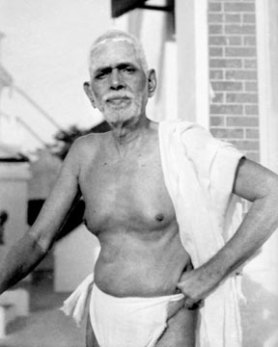Who Am I?
The practice of advanced yoga methods and pranayama with discipline along with meditation on the Chakras (Energy Centers in the body) leads to various mental and spiritual experiences. Sri Ramana’s teaching, however, views such yogic and meditative practices as preliminary to the real quest into the investigation of the nature of the “I”.
Visions of angels, deities, super conscious states, and various types of psychic abilities do manifest on the spiritual path. But fascinating as such things are to the human mind, these do not resolve the fundamental question about the nature and mystery of existence.
People say, “I like this”, “I dislike this”, “I am a doctor”, “I am a professor”, “I am a psychic”, “I am a student”, “I am good”, “I am a husband”, “I am a wife”, “I went here”, “I am strong”, “I am weak”, “I am happy”, “I am sad”, etc. The commonality in all we do and how we view our self is this, “I”
The method of Self-Inquiry is to ask oneself “KOHUM”. KOHUM in Sanskrit translated literally means “Who Is Me?” In English, we use the question, “Who Am I?” or Who is this “I” that is a constant reference point for us?
What is this sense of identity that engages in all these activities and has a variety of experiences, perceptions about the world and itself?
Who is the I that sees, dreams or has visions. According to Sri Ramana, without understanding the nature of the I and resolving the mystery of existence, permanent satisfaction and peace are not gained.
It is for this reason that great sages say that one should aspire for Self-Knowledge above all else.
Everything, absolutely without exception, is transient. One is born, one grows old, one has many experiences in the world, and then one dies.
Things have a beginning and then an inevitable end. All physical and mental abilities and powers eventually fade. Psychic abilities and every kind of experience, supernatural or otherwise meets the same fate. It ends.
What remains always present is simply the sense of existence, this sense of I. The method of self-inquiry involves a focus on this I, an awareness of this awareness, until the quality of self-awareness is known as the inner essence of our existence. The words cannot fully capture this approach. It is understood only with effort and practice.
Therefore, the aspirant should with confidence maintain the inner gaze focusing the “I” on “I”. Remaining in stillness with awareness aware of itself is the practice. Remaining with the sense of “I AM” is the practice.
It is this practice which is known as the direct path. It leads to the “I” merging into its Source. Immediately, it is seen that the Source is the Self, that the ancients called Sat-Chit-Ananda. There are no words to describe it fully. It knows nothing else other than It Self, there being nothing else to know.
It is only this that the sages have referred to as the Supreme and the Absolute Beauty, the Core of Being that is Reality itself which sits in the heart of all beings as their support. It is Knowledge, Existence, Bliss as one whole which animates existence and gives light and life to the mind.
Namaste

You must be logged in to post a comment.